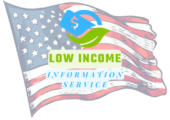Free Low Income Internet Service
In our digital age, access to the internet has become an essential part of our everyday lives. However, not everyone can afford to have this vital connection. That’s why government programs have been implemented, providing free internet access to those who are unable to afford it. Additionally, numerous non-profit organizations have stepped up to offer free internet services, bridging the digital divide for underserved communities. Furthermore, low-cost internet plans have been introduced specifically for low-income individuals, offering them an affordable option to stay connected. In this blog post, we will explore these avenues and discuss how to qualify and apply for free low-income internet.
Government Programs Providing Free Internet Access
Access to the internet has become an essential need in today’s digital age. However, not everyone has the means to afford a reliable internet connection, especially low-income individuals and families. Recognizing the importance of internet access for education, job searching, communication, and other vital services, the government has implemented various programs to provide free internet access to those in need.
One example of a government program offering free internet access is the Federal Communications Commission’s (FCC) Lifeline program. This initiative aims to make communication services more affordable for low-income households. Along with discounted phone services, eligible participants can also receive a discount on their monthly internet bill, making it more accessible.
Another program that focuses on bridging the digital divide is ConnectHomeUSA. This initiative was launched by the Department of Housing and Urban Development (HUD) and aims to provide free or low-cost internet access to families living in HUD-assisted housing. By partnering with local internet service providers, ConnectHomeUSA strives to ensure that all residents have the opportunity to access educational resources and job opportunities online.
- One key participant in this program is EveryoneOn, a national nonprofit organization that works to connect low-income families to affordable internet services. Through partnerships with internet service providers, EveryoneOn offers low-cost internet plans to eligible households.
- Internet Essentials is another notable program initiated by Comcast, one of the leading internet providers in the United States. This program provides low-cost internet service to eligible low-income individuals and families, along with the option to purchase an affordable computer.
- Moreover, some states also have their own initiatives to bridge the digital divide. For example, California’s Internet for All Now Act aims to provide free or affordable broadband access to all residents, particularly those in underserved areas.
| Program | Description |
|---|---|
| Lifeline | A government program offering discounted phone and internet services for low-income households. |
| ConnectHomeUSA | A program providing free or low-cost internet access to families living in HUD-assisted housing. |
| EveryoneOn | A national nonprofit organization connecting low-income families to affordable internet services through partnerships with providers. |
| Internet Essentials | A program by Comcast offering low-cost internet service and affordable computers to eligible low-income individuals. |
| Internet for All Now Act | A California initiative aiming to provide free or affordable broadband access to all residents, particularly in underserved areas. |
These government programs and initiatives play a crucial role in ensuring that individuals and families with low incomes have access to the internet. By bridging the digital divide, they empower these individuals to access educational resources, employment opportunities, and various online services that are essential for their personal and professional growth.
Non-Profit Organizations Offering Free Internet Services
Non-profit organizations play a crucial role in bridging the digital divide by offering free internet services to low-income individuals. These organizations understand the importance of internet access in today’s society, as more and more essential services are shifting online. By providing free internet services, non-profit organizations aim to ensure that everyone has equal opportunities to access educational resources, job opportunities, healthcare information, and other vital services.
One such non-profit organization is “Internet for All,” which is dedicated to providing free internet access to underserved communities. This organization partners with local internet service providers and businesses to offer free internet service in community centers, libraries, and other public spaces. They also provide free internet dongles to qualifying individuals, enabling them to access the internet from the comfort of their homes.
Another non-profit organization, “Connect the Unconnected,” focuses on connecting rural areas and remote communities to the internet. They set up community-based internet hubs powered by solar panels, ensuring that even the most inaccessible areas have internet access. These hubs serve as Wi-Fi hotspots, allowing individuals to connect their devices and access the internet for free.
Non-profit organizations also collaborate with schools and educational institutions to provide free internet services to students from low-income families. “Education Connect” is one such organization that partners with schools to offer free, high-speed internet access to students who lack reliable internet connections at home. This ensures that students can access online learning resources and complete their assignments without any barriers.
- These non-profit organizations not only provide free internet services but also offer digital literacy programs to empower individuals with the necessary skills to navigate the online world. Through workshops and training sessions, they teach basic computer skills, internet safety, and how to effectively utilize online resources.
- The impact of these non-profit organizations is far-reaching. By bridging the digital divide, they empower individuals to unlock opportunities, gain knowledge, and connect with others. Access to free internet services can significantly improve the quality of life for low-income individuals and uplift entire communities.
| Non-Profit Organization | Services |
|---|---|
| Internet for All | Free internet access in community centers and libraries, provision of free internet dongles |
| Connect the Unconnected | Community-based internet hubs in rural and remote areas, Wi-Fi hotspots |
| Education Connect | Free high-speed internet access for students from low-income families, digital literacy programs |
Low-Cost Internet Plans For Low-Income Individuals
For many low-income individuals, access to the internet can be a luxury they simply cannot afford. However, with the increasing importance of online connectivity in today’s society, not having internet access can put these individuals at a great disadvantage. Thankfully, there are several low-cost internet plans specifically designed to cater to the needs of low-income individuals, ensuring that they too can enjoy the benefits of being connected. In this blog post, we will explore some of these affordable internet plans and how individuals can qualify and apply for them.
One popular provider of low-cost internet plans for low-income individuals is Connect2Compete. This non-profit organization partners with internet service providers across the country to offer discounted internet services to eligible households. To qualify for Connect2Compete’s internet plans, individuals must have at least one child who qualifies for the National School Lunch Program and reside in an area where the service is available. The program not only provides affordable internet access but also offers digital literacy training to help individuals make the most of their online experience.
Another option for low-income individuals is the Internet Essentials program by Comcast. This initiative is designed to bridge the digital divide and provide affordable internet access to eligible families. To qualify for Internet Essentials, individuals must be eligible for public assistance programs such as the National School Lunch Program, housing assistance, Medicaid, or SNAP. In addition to low-cost internet services, Comcast also offers the option to purchase an internet-ready computer for a low price, further facilitating access to the online world.
| Provider | Eligibility Criteria | Monthly Cost | Maximum Download Speed |
|---|---|---|---|
| Connect2Compete | Child qualifies for National School Lunch Program | $9.95 | 25 Mbps |
| Internet Essentials | Eligible for public assistance programs | $9.95 | 25 Mbps |
It’s important to note that these are just a few examples of low-cost internet plans available for low-income individuals. Many other internet service providers and organizations offer similar programs to increase internet accessibility. Additionally, some government programs, such as Lifeline, also provide discounts on monthly internet bills for qualifying individuals.
Having access to low-cost internet plans is not only about entertainment and convenience; it is also about providing equal opportunities for education, job searching, healthcare information, and staying connected with friends and family. With the availability of these affordable options, low-income individuals can overcome the digital divide and gain the necessary tools to thrive in today’s digital world.
How To Qualify And Apply For Free Low-Income Internet
Many low-income individuals struggle to afford essential digital services such as internet access. However, there are various government programs and non-profit organizations that offer free or low-cost internet plans to help bridge this digital divide and ensure that everyone has access to the online world. In this blog post, we will explore how individuals can qualify for and apply for these free low-income internet services.
Government Programs Providing Free Internet Access: The government offers several programs to provide free internet access to low-income individuals. One such program is the Federal Communications Commission’s (FCC) Lifeline program. Lifeline offers a monthly discount on internet services to eligible low-income consumers. To qualify for Lifeline, individuals must have an income at or below 135% of the federal poverty guidelines or participate in specific government assistance programs such as Medicaid, Supplemental Nutrition Assistance Program (SNAP), or Federal Public Housing Assistance (FPHA).
Non-Profit Organizations Offering Free Internet Services: In addition to government programs, non-profit organizations play a crucial role in providing free internet services to low-income individuals. One notable organization is EveryoneOn, which aims to connect individuals to affordable internet service and provide digital skills training. They partner with internet service providers to offer low-cost plans and even provide free computers and tablets to eligible participants. Other non-profit organizations, such as PCs for People and Internet Essentials by Comcast, also offer free or low-cost internet service options to eligible individuals.
Low-Cost Internet Plans For Low-Income Individuals: There are also various low-cost internet plans specifically designed for low-income individuals. For example, Comcast’s Internet Essentials program offers affordable internet service for eligible households, including those with students who qualify for the National School Lunch Program. Another option is AT&T’s Access program, which provides low-cost internet access to SNAP participants. These programs often include additional benefits such as free Wi-Fi equipment and the option to purchase a low-cost computer.
When applying for free low-income internet services, it’s important to gather the necessary documentation and information. This may include proof of income, participation in government assistance programs, or student eligibility verification. It is advisable to visit the websites of government programs and non-profit organizations offering these services to find detailed eligibility criteria and application instructions. Applying online or contacting program representatives directly can help individuals navigate the application process and determine their eligibility for free low-income internet services.
Frequently Asked Questions
1. What government programs provide free internet access?
There are several government programs that offer free internet access, such as the Federal Communications Commission’s Lifeline program and the ConnectHomeUSA initiative.
2. Which non-profit organizations offer free internet services?
Non-profit organizations like EveryoneOn and PCs for People offer free or low-cost internet services to low-income individuals and families.
3. What are some low-cost internet plans for low-income individuals?
Some low-cost internet plans for low-income individuals include Internet Essentials from Comcast, Access from AT&T, and Spectrum Internet Assist.
4. How can I qualify and apply for free low-income internet?
To qualify for free low-income internet, you may need to meet certain eligibility criteria, such as being a participant in a government assistance program or having a household income below a certain threshold. You can apply for these programs directly through the respective government agencies or non-profit organizations.
5. How do government programs ensure equal access to free internet?
Government programs for free internet access often prioritize serving underserved and low-income communities. They may focus on areas with limited or no internet access and work with local community organizations to increase awareness and enrollment.
6. Can I get free internet access for my child’s education?
Yes, some government programs and non-profit organizations offer free or discounted internet services specifically for students to support their education. It is worth checking if any programs are available in your area.
7. Are there any other alternatives for free or low-cost internet access?
In addition to government programs and non-profit organizations, you can explore other alternatives for free or low-cost internet access. Some libraries, schools, and community centers offer free Wi-Fi or internet access for public use. Additionally, some internet service providers offer trial periods or discounted plans for new customers.



